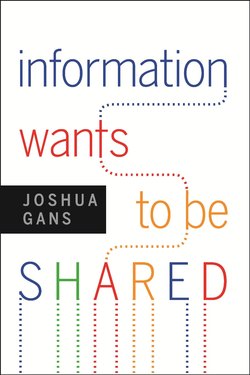Читать книгу Information Wants to Be Shared - Joshua Gans - Страница 6
На сайте Литреса книга снята с продажи.
All That Glitters
ОглавлениеFifty years earlier, a combination of distance and accuracy had plagued another geographic movement: the shift of people and equipment to California to participate in the Gold Rush in 1849. From the routes themselves to the ability to secure supplies to the speed of travel, forty-niners demanded information. Knowledge could and did make or break their ventures. And if they got to California, they required yet more information, from maps and local knowledge, to seal the deal.
So how was accurate and timely information distributed when there were no electronic means of communication? Richard Stillson, a George Mason University historian, has documented much of the Gold Rush information that survives and paints a portrait of an old-fashioned struggle to overcome communication constraints and a very modern struggle to sort the credible from the incredible. [3] Not surprisingly, guidebooks were essential for westbound travelers, and publishers seized on the new demand. One of the most popular early on was Edwin Bryant’s What I Saw in California. Bryant, a Kentucky newspaper editor, traveled to California in 1846 with a group that included the Donner Party. Bryant missed being trapped by snow in the Sierras and was able to return the next year to write of his experiences. When the demand for information soared in 1848, publisher D. Abraham and Co. realized the value of Bryant’s account and published several expanded editions with appendixes that included more from Bryant himself. The reputation of the author made the sale.
A flood of similar books followed, but their credibility waned. Moreover, the demand for more immediate news trumped older accounts; leading newspapers got into the act of hunting for information to report back East. This proved very difficult and the newspapers cribbed shamelessly from one another. The process was further compromised by trailhead towns, which, eager for business, planted copy that maximized their own attributes and decried competing towns. The result was chaos. Similarly, rumors of faster routes spread by word of mouth, generating still more hardship for emigrants.
Newspapers also published the letters of gold-rushers who had actually made it. These were often quite detailed, but above all they turned out to be a credible source of information. Letter writers, desperate to let their worried families know what was going on, were not typically prone to stretching the truth. The natural and personal desire to share experiences with loved ones proved to be a critical source of information to many others facing similar problems.
Technology proved a critical constraint on the flow of even this information. Letter writers relied on the post office, which was hardly equipped to deal with the new volume of post from California. Moreover, bureaucrats who exerted centralized control from Washington failed to appreciate the greater pay required for postmasters and postal workers in California, leading to a labor shortage. The forty-niners, concerned that their letters were stuck in a storage room in San Francisco, lamented simply not knowing where their letters were. Private options—the express companies—filled the void (and also, coincidentally, helped solve another sharing problem, the transfer of money). Technology was simply not up to the task of making it easy to share information from the West.
